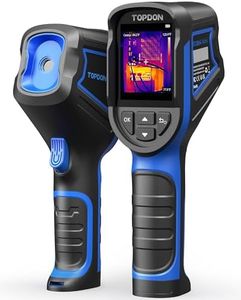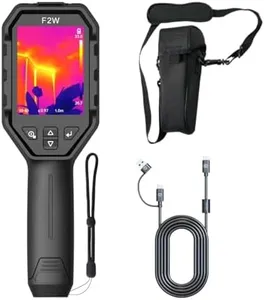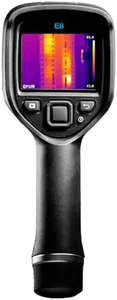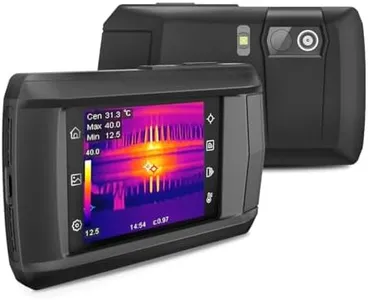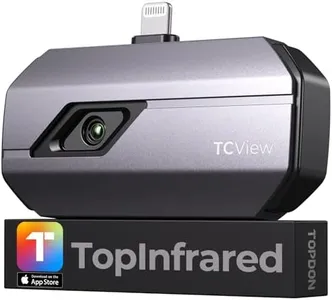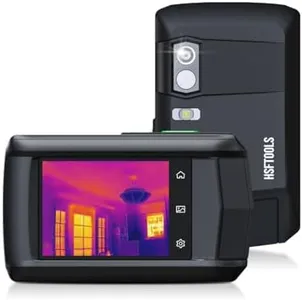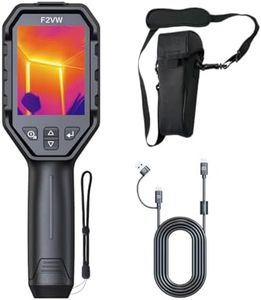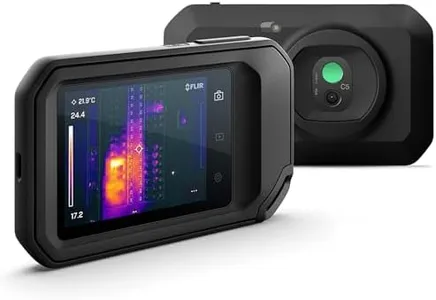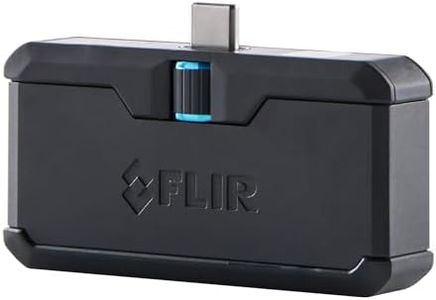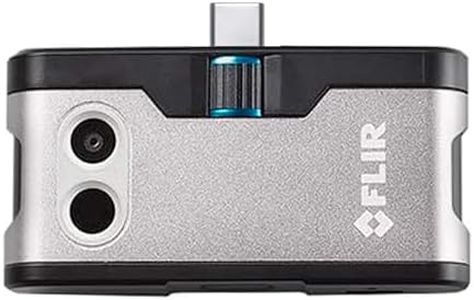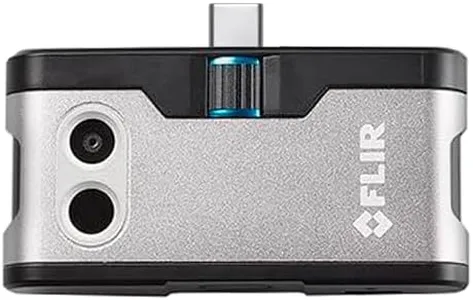10 Best Thermal Cameras 2025 in the United States
Recommended lists
Our technology thoroughly searches through the online shopping world, reviewing hundreds of sites. We then process and analyze this information, updating in real-time to bring you the latest top-rated products. This way, you always get the best and most current options available.

Our Top Picks
Winner
TOPDON TC004 Mini Handheld Thermal Imaging Camera, 240 x 240 TISR Resolution, -4°F to 842°F, 15-Hour Battery Life, 128 x 128 IR Resolution, 25Hz Infrared Camera, High/Low Temp Alerts, Auto Shutdown
Most important from
67 reviews
The TOPDON TC004 Mini is a compact and user-friendly thermal camera offering solid performance for home inspections and light professional use. Its thermal resolution starts at 128x128 but is enhanced to 240x240 using TISR technology, providing clearer images than many entry-level models. With a 40°x30° field of view and a smooth 25Hz refresh rate, it captures thermal images that feel responsive and detailed enough for spotting issues like leaks or electrical faults. It measures temperatures from -4°F to 842°F, covering most common inspection needs, and smartly highlights high and low temperature spots automatically. The color palette options add flexibility for different environments.
The camera stands out with a very long battery life of up to 15 hours, paired with auto-shutdown features to preserve power, which is convenient for extended use without frequent recharging (note you get the cable but no charging plug). The build is durable, rated IP54 for water resistance and able to survive drops up to 2 meters, making it reliable for fieldwork.
While it offers good thermal resolution, it does not specify the thermal sensitivity (NETD), which is important for detecting subtle temperature differences. The built-in storage holds a good number of images (around 8,000), but lacks advanced connectivity options like Wi-Fi or Bluetooth for quick sharing. This model suits users who want a balance of portability, decent image quality, and long battery life for inspections around the house or small-scale professional tasks, without needing high-end features or connectivity.
Most important from
67 reviews
HSFTOOLS F2W Thermal Camera 256x192 IR Resolution,640x480 Super Resolution Thermal Imaging Camera, IntellFault Intelligent Scene,3.2" Screen,25Hz,-4°F to 1022°F,App Image Transfer & PC Analysis,Case
Most important from
85 reviews
The HSFTOOLS F2W Thermal Camera offers a robust set of features tailored for users requiring detailed thermal imaging. One of its primary strengths is the resolution, with its advanced algorithm boosting the 256x192 IR resolution to a crisp 640x480 on a 3.2” screen. This ensures clear, high-definition images, enhanced by a high refresh rate of 25 Hz which provides fluid visuals. The thermal sensitivity is impressive at below 40 mK, ensuring minute temperature differences are captured effectively. The temperature range is quite broad, from -4°F to 1022°F, making it versatile for various industrial applications.
The device is user-friendly with wireless connectivity, allowing easy image sharing to smartphones or tablets, and offers multiple color palettes for versatile image analysis. Additionally, it features accurate temperature measurement capabilities with adjustable emissivity settings for different materials, which enhances its precision across different surfaces. Durability and ease of use are also notable; the F2W is designed to withstand harsh conditions with a drop test rating of 6.6ft and an IP54 protection rating. It includes a rechargeable battery with up to 6 hours of usage and a sturdy build with a protective lens cover.
Despite minor cons, the HSFTOOLS F2W is a solid choice for professionals needing reliable and detailed thermal imaging in diverse and demanding environments.
Most important from
85 reviews
FLIR E8-XT - Commercial Thermal Imaging Camera with WiFi. High Resolution Infrared Camera Ignite Cloud
The FLIR E8-XT is a handheld thermal camera designed for commercial and outdoor use, offering a solid resolution of 320 × 240 pixels. This provides clear thermal images that help you quickly spot temperature differences and hidden issues. It features patented MSX technology, which overlays visible details over the thermal image, making it easier to understand what you’re looking at without needing expert interpretation. The camera covers a wide temperature range from -20°C to 550°C (-4°F to 1022°F), suitable for many industrial and maintenance tasks.
Its wireless connectivity via WiFi and Bluetooth allows easy image sharing and cloud storage through the FLIR Ignite app, streamlining workflow and reducing manual file handling. Battery life is decent, powered by a rechargeable lithium-ion battery, making it portable enough for fieldwork. The device weighs around 1.3 pounds and is built with an IP54 rating, meaning it can handle some dust and water splashes, though it’s not fully rugged for harsh environments. While the 320 × 240 resolution is good for many uses, higher-end models offer better detail if you require very precise imaging.
The FLIR E8-XT balances user-friendly features with reliable performance, making it a practical choice for professionals needing quick diagnostics, maintenance checks, and outdoor security inspections without overwhelming complexity.
Buying Guide for the Best Thermal Cameras
When choosing a thermal camera, it's important to understand the key specifications that will determine how well the camera meets your needs. Thermal cameras are used for a variety of applications, from building inspections and electrical maintenance to wildlife observation and security. Knowing what to look for in terms of resolution, sensitivity, temperature range, and other features will help you make an informed decision and select the best thermal camera for your specific requirements.FAQ
Most Popular Categories Right Now


